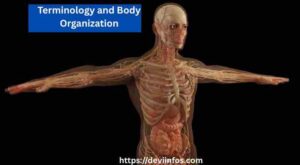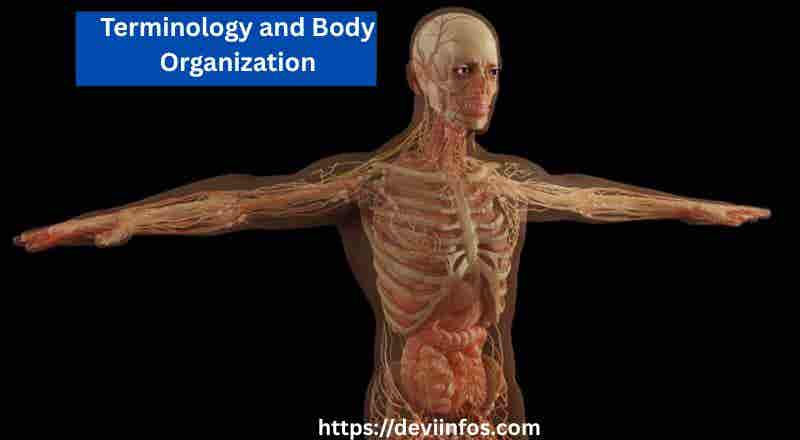With everything learned in school about the human body, it may at first appear to be an impending task. There is the mention of such obscure words as anterior, distal, sagittal plane and homeostasis and it begins to sound like a different language.

Nevertheless, there is no need to worry! This primer will explain, in easy human terms, step-by-step the basic medical terms used and the organization of the body part-by-part. It requires neither a doctor nor a medical degree to study YOUR body, only some curiosity.
Why Terminology Is Important
Just imagine what it would be like to construct an automobile or repair the computer when you do not know what the pieces are called.
You would be stumped, wouldn’t you?
And this is so with the body. Professionals in the field of health are very specific in order to be clear and universal regardless of their location in the world.
Acquisition of this language can be beneficial to anyone especially students, patients and care givers who need to better comprehend health and anatomy.
We shall begin at the bottom: anatomical terms.
Simple Cardinal Terms
It is built in the body where health professionals give the description of where they are. These terms that relate to direction assist in establishing the relationship between position of one body part with another. These are some simple definitions:
Anterior (or Ventral) – The front of the body (e.g. Chest is anterior to spine).
Posterior (or Dorsal) –The back of the body (e.g. the spine lies in the back of the heart).
Superior – Above (e.g. the neck is superior to the head).
Inferior– Under (e.g. the stomach is below the lungs).
Medial-Nearest the mid line of the body.
Lateral -Far off the midline.
Proximal– This is nearer to the place where it is attached (primarily limbs).
Distal -Further distant to the point of attachment.
The familiarity with such terminologies can help in changing the game when dealing with injuries, surgeries, or even workout schedules.
Body Planes & Sections
In order to know how doctors or scientists will study the parts of the body they will apply imaginary lines, called planes, to cut the body into sections:
Sagittal Plane– This can be used to split the body either left or right.
Frontal (Coronal) Plane – Splits the body in a front and back part.
Transverse (Horizontal) Plane – The body is divided into halves, top and bottom.
This assists in scanning, imaging and surgeries. An example is when MRI videos tend to snap images in these axes so as to have a clearer view of the internal organs.
Body Cavities: Organs To Go
Consider the body to be a house which has rooms. These are termed body cavities and they contain body organs in place. A breakdown:
Cranial Cavity– As it is filled with the brain.
Spinal Cavity -this houses the spinal cord.
Thoracic Cavity- Anterior compartment containing the heart and lungs is located in it.
Abdominal Cavity: This part holds the organs such as the intestines, liver and the stomach.
Pelvic Cavity:Contains the bladder and reproductive organs and a segment of the intestines.
These holes cover bones and membranes and are designed to retain the organs in their jobs and safety.
Human Body Levels of Organization Levels

In order to comprehend the body, one has to comprehend its structure, starting with smallest elements to the entire structure. Human body consists of six stratums of structural organization:
Chemical Level– This stage is composed of atoms and molecules, the units of life (such as water, oxygen, proteins), etc.
Cellular Level– the smallest living units are called cells. Various kinds of cells have different tasks.
Tissue Level -Like cells are collected together making up a tissue. These are four broad types:
Epithelial (envelopes/membranes)
Connective (support)
Muscle (movement)
Read also: Top 6 Famous Traditional Spanish Food Dishes & How to Prepare
Nervous (control)
Organ Level– Tissues integrated turn out in organs (e.g. heart, brain and liver).
System Level -Organs relate to each other in systems (e.g. digestive or respiratory system).
Organism Level– This is composed of all systems that interact to make up the entire human body.
The 11 Major Body Systems
Here is a zoom out, and now we can look at the major body systems. Every system has a task in its own right but it all combines to ensure you remain alive and functional:
1.Integumentary System- Skin, hair, nails. It safeguards the body.
2.Skeletal System-Bones and joints. Helps and cushions body organs, creates red blood cells.
3.Muscular System – Muscles which aid in movement.
4.Nervous System- Brain, spin cord, nerves. Regulates the activities of the body.
5.Endocrine System-Hormone- producing glands (such as the thyroid or the adrenal).
6.Cardiovascular system-Heart and blood vessels. Moves oxygen and blood.
7.Lymphatic/Immune System-Combat infection and restores fluid to the circulatory body.
8.Respiratory System- Lungs/air ways. Helps you breathe.
9.Digestive System- Breaks food into nutrients giving your body nutrients.
10.Urinary System -The urinary system eliminates waste products in the blood and performs the balancing of water levels.
11.Reproductive System -Organs that serve to bear children.
All systems are dependent on each other. As an example, the respiratory system supplies oxygen to your muscular system whereas the digestive system supplies nutrients to your muscular system.
Homeostasis-The Regulator of the Body
Homeostasis is one of the interesting parts of the human organism. It implies maintaining a balance of everything. Your body is ever attempting to fine-tune itself to be in a healthy range.
Examples:
• Keeping the body temperature, 37 0 C.
• Normalization of sugar.
• Maintaining the blood pressure to safe levels.
This is governed by feedback mechanisms which are primarily:
Negative Feedback – Halts or counteracts a change (e.g. sweating when its hot).
Positive Feedback– augments change (e.g contractions in childbirth).
The incapability of your body to survive slight environmental change would not be realised without homeostasis.
Common Healthcare, Anatomy Words
Here are a couple more words and phrases you will probably come across:
Anterior vs. Posterior – Front vs. Back
Supine – Lying on back
Prone – Your stomach down
Clinical pathology – The effects of disease on cells, tissues, organs, biochemicals and health.
Physiology –How the body works
Anatomy – Body structure study
Being familiar with these basic terms will enable you to speak with healthcare professionals with greater assurance and will allow you to understand what is happening in your own body.
Conclusion: Map to Your Self.
On the surface, medical and anatomical terms might seem difficult but in simple terms, they are just some of the tools we need to be able to explain and comprehend the amazing intricacy of the human body.
Whether you are a student, an athlete, or interested in your own health and body, familiarizing yourself with the fundamentals of anatomy and vocabulary of health and medicine is powerful.
The body is like a beautiful, well-planned city — with roads (blood vessels), buildings (organs) and telephone networks (nerves). The more you know the map, it will be that much easier to look after you.
So use the time to get to know the language of your own body. It’s one of the best investments you can make for a healthier, more informed life.
